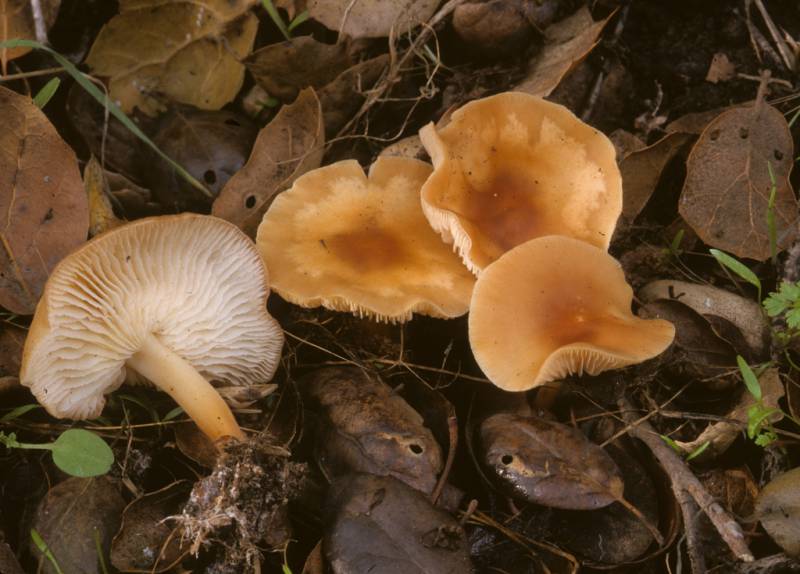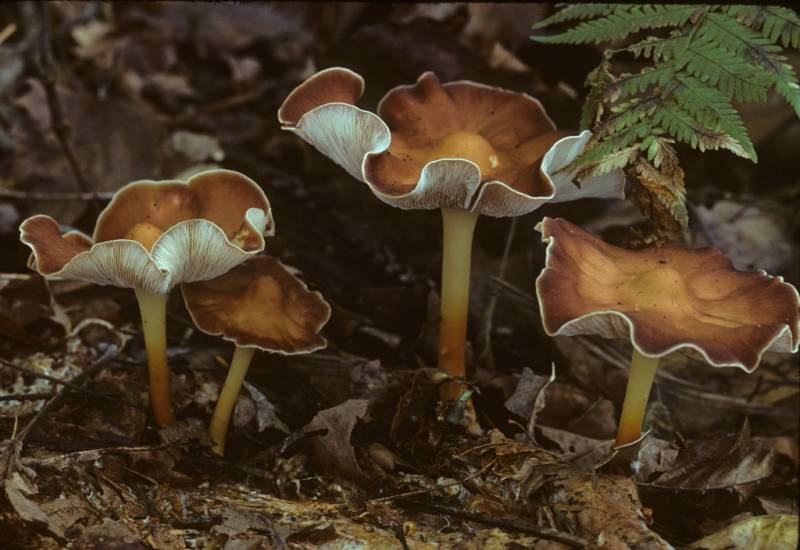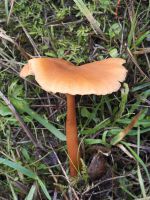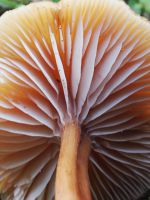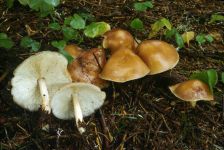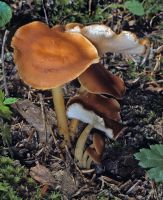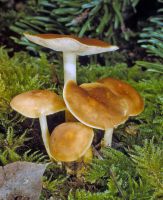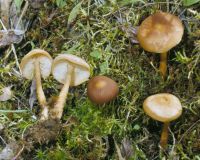Spores: whitish to pale yellow, smooth, and do not react in Melzer’s reagent
Conservation Status: Not of concern
Edibility: Gymnopus dryophilus is a well known and widely distributed species in all sorts of forests. In the PNW it occurs from spring into fall during moist periods, but its abundance varies considerably from year to year. It is a medium-sized or sometimes smaller species that occurs scattered or in crowded groups or clusters. The caps, when fresh and moist, have a buttery appearance, and are reddish brown, however, they fade readily on drying and become tan to yellow-brown, pinkish buff or paler. The fruitbodies are long-lived and with age the caps may become irregular and lobed. The gills are close and white to buff, usually attached but can pull free in age, and the edges are even at first but eroded with age. The stipes are slender, often enlarged below, hollow, rather tough, colored like the cap or paler, sometimes with longitudinal striations, and the base often with white strands extending into the substrate. The spores are whitish to pale yellow, smooth, and do not react in Melzer’s reagent. The taste is pleasant. In some areas this species carries a fungus parasite Syzygospora mycetophila (Peck) Ginns that produces small, pale irregular growths on the surface of the mushrooms. G. dryophilus sometimes is confused with Rhodocollybia butyracea (Bulliard: Fries) Lennox and its relatives but the latter fungus has a pinkish spore deposit and at least some of the spores turn reddish brown in Melzer’s (dextrinoid reaction) under the microscope.
Gymnopus dryophilus is a well known and widely distributed species in all sorts of forests. In the PNW it occurs from spring into fall during moist periods, but its abundance varies considerably from year to year. It is a medium-sized or sometimes smaller species that occurs scattered or in crowded groups or clusters. The caps, when fresh and moist, have a buttery appearance, and are reddish brown, however, they fade readily on drying and become tan to yellow-brown, pinkish buff or paler. The fruitbodies are long-lived and with age the caps may become irregular and lobed. The gills are close and white to buff, usually attached but can pull free in age, and the edges are even at first but eroded with age. The stipes are slender, often enlarged below, hollow, rather tough, colored like the cap or paler, sometimes with longitudinal striations, and the base often with white strands extending into the substrate. The spores are whitish to pale yellow, smooth, and do not react in Melzer’s reagent. The taste is pleasant. In some areas this species carries a fungus parasite Syzygospora mycetophila (Peck) Ginns that produces small, pale irregular growths on the surface of the mushrooms. G. dryophilus sometimes is confused with Rhodocollybia butyracea (Bulliard: Fries) Lennox and its relatives but the latter fungus has a pinkish spore deposit and at least some of the spores turn reddish brown in Melzer’s (dextrinoid reaction) under the microscope.
PNW Herbaria: Specimen records of Gymnopus dryophilus in the Consortium of Pacific Northwest Herbaria database.
CalPhotos: Gymnopus dryophilus photos.

